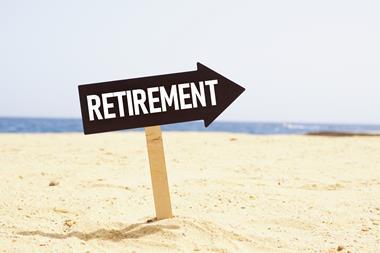The Independent collapse was further proof that rating agencies don't always get it right. Adrian Leonard examines their role in today's market.
Rating agencies Standard & Poor's (S&P) and AM Best have been wiping egg off their faces after being splattered by the explosion of Independent Insurance. Both had issued top-tier ratings to the company and kept them until just months before its failure.
Questions over agents' efficacy increase in such aftermaths. If a company can collapse under analysts' noses, what is their purpose?
Director of S&P's financial services ratings group, David Anthony, says: "S&P ratings are not a guarantee of solvency, but an informed financial opinion. S&P does not and has never purported to provide a due diligence function on rated entities in the nature of an audit."
He notes that global default studies of a fifteen-year period show A-rated companies have only a 1.3% chance of default.
Managing director of European operations at AM Best Europe, Stuart Shipperlee, says: "The information available to AM Best and, to our knowledge, other public commentators at the time did not suggest anything like the scale of problems that have since emerged (at Inde-pendent). It is important to note that the 2000 returns showed a firm whose financial position was consistent with a secure rating."
Despite that, he says Independent's rating was publicly placed under review in February.
Hits and misses
Rating agents typically garner little credit when they get things right. S&P reduced its credit rating on Equitable Life's with-profits life fund some two years before calamity struck the UK's leading mutual. Moody's lowered Reliance Group's insurance financial strength rating to BAA2 (adequate) in November 1999 and noted the company's tenuous situation in February 2000. Before year end, the now-failed Reliance was reduced to CAA1 (very poor).
However, the rating system is not perfect.
In its report "Insolvency: will historic trends return?", AM Best says of 302 insurer insolvencies between 1989 and 1998, only eight firms were rated in the secure range (A++ to B+) within the year of their insolvency - that is, 2.65%. However, only 59 of those companies were rated at all by AM Best during the year of their insolvency, raising to 13.6% the percentage of firms rated secure in the year of their failure.
The report notes that "some companies rejected AM Best's rating decision and opted not to have their rating published. In this scenario, the rating falls into the `not rated' category, which increased 47% among the 302 insolvents by the time of insolvency." In other words, if AM Best assigned a rating that was, in the insurer's view, too negative, the agents were willing to keep quiet about it.
Shipperlee says it is not possible for AM Best to maintain a rating when a company will not cooperate. "The rating process requires the active participation of the insurer. If they choose to withdraw from the process, we have to withdraw the rating."
However, the majority of failed rated insurers were assigned `vulnerable' ratings of B or lower at least three years before their collapse.
One London broker, who wishes to remain anoynmous, says his major concern with the rating agents is a conflict of interest. He says the fact the agencies are paid by insurance companies, rather than by ratings users, means "making sweeping decisions about a company's financial strength can have a direct impact on their income stream".
Shipperlee says the level of work required would be unsupportable if agencies required users to fund the full cost through subscriptions. He insists no conflict of interest results. "AM Best rates thousands of insurers globally. Our only commercial incentive is to offer clearly objective and independent opinions to the marketplace."
The insurance sector tends to use ratings differently than the capital markets, where ratings were invented. Any rating below A is considered by many insurance buyers and intermediaries to be too low but, in reality, triple-B is still investment grade. In insurance, anything out of A-range is seen as negative.
The acid test
The broker says this leads to a self-fulfilling prophecy. "Agency ratings are seen as an acid test for a firm's ability to pay claims, so when a rating begins to fall, even as a result of a market blip, people start questioning the financial strength of the company."
Thus, a temporary downgrade, even to a secure BBB+ rating, may cause severe grief for insurance companies.
S&P says it avoids reactive rating changes. "Ratings focus on the medium to long term," says Anthony. "They are generally stressed to allow for market fluctuation and other corporate events. To have ratings that move up and down in hard or soft markets, or following a loss year, would not be helpful to the market."
However, a market blip, he adds, "can some-times be the straw that breaks the camel's back".
When insurers collapse, their rating can plunge. In the case of Independent, it took S&P 104 days from its first 2001 rating action (an affirmation of its A-rating) to lower it to BBB+, but only 36 more to drop it to R. AM Best took 119 days for its first downgrade and, five days later, had the firm at F.
Anthony rejects calls for formal oversight of ratings agencies. "Licensing requirements for rating agencies and government approval are not needed, because the market judges us based on these factors and thereby chooses which ratings to use."
However, there are not many alternatives. Few intermediaries operate in-house security services which do more than rely on the output of the leading rating agencies. As the Independent debacle shows, the regulator and the press aren't particularly prescient either.
While some people clearly question the agents' impartiality, the ratings assigned by S&P, AM Best and Moody's shape the nature and destiny of each and every rated insurance business. As long as buyers, cedants, intermediaries, rated companies and even supervisors continue to lean heavily on agencies to pass judgment on the merits of counterparties, the agencies' influence will continue, regardless of who pays them, or how often they get it right.
Hosted by comedian and actor Tom Allen, 34 Gold, 23 Silver and 22 Bronze awards were handed out across an amazing 34 categories recognising brilliance and innovation right across the breadth of UK general insurance.













































